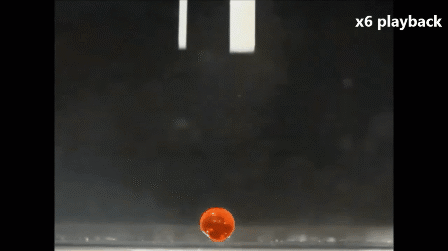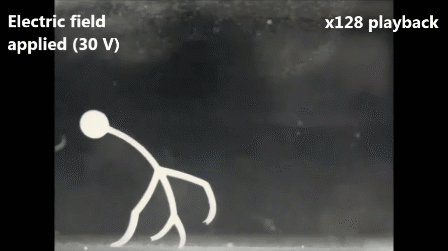The future of robots is wetter than expected. In a new demonstration released by engineers at Rutgers University–New Brunswick, a 3-D printed soft robot flopped about deliberately underwater, grabbed and pulled objects, and even walked. The range of applications for robots like this span every field from artificial organs to underwater inspections. Consider, for example, this little gripping arm:

Operating underwater, soft robots built on this research could collect evidence from lost vehicles, sift through contraband tossed overboard, and maybe at a larger scale even be used in demining operations.
Or consider, instead, the ability to pull an object inward, and imagine that capability inside the maw of a robotic fish. Discreet intelligence collection, hidden inside the mock bodies of artificial animals, could collect trash from the shores of artificial islands or follow in the wakes of coastal patrols. For a Navy looking at new ways to survey the sea, robots that can mimic animals offer a kind of stealth.
And then there is the walker. Look at this thing! Cartoonish, alien, and just an inch tall.

How’s it work? From Rutgers:
Walking is maybe not the most efficient way to move underwater but the form works, and if the body could carry a sensor, it’s not harm to imagine a larger version of the machine flopping onto shores after a release deep underwater, moist bodies flailing into position to provide some passive surveillance hours or even days before humans get there.
None of this is necessarily a direction the technology wants to go, but the potential is there, and as navies around the world look for new ways to perform their responsibilities, soft robots might join the growing legions of unmanned underwater machines.
Watch it in action below:
Kelsey Atherton blogs about military technology for C4ISRNET, Fifth Domain, Defense News, and Military Times. He previously wrote for Popular Science, and also created, solicited, and edited content for a group blog on political science fiction and international security.








